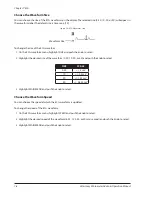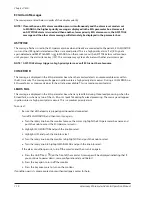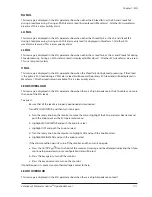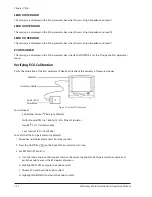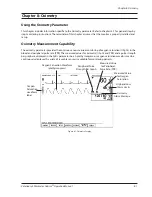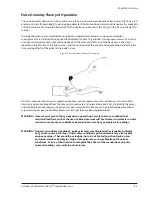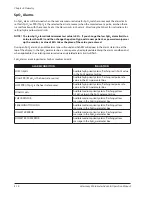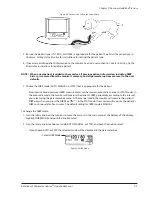
Chapter 8: Oximetry
Veterinary 3 Parameter Advisor
®
Operation Manual
8-3
Pulse Oximetry Theory of Operation
The pulse oximeter determines %SpO
2
and pulse rate by passing two wavelengths of low intensity light, one red
and one infrared, through body tissue to a photodetector. Information about wavelength range can be especially
useful to clinicians. Wavelength information for this device can be found in the
SpO
2
Specifications
section of this
manual.
Pulse identification is accomplished by using plethysmographic techniques, and oxygen saturation
measurements are determined using spectrophotometric oximetry principles. During measurement, the signal
strength resulting from each light source depends on the color and thickness of the body tissue, the sensor
placement, the intensity of the light sources, and the absorption of the arterial and venous blood (including the
time varying effects of the pulse) in the body tissues.
Figure 8.2: Pulse Oximetry Theory of Operation
Oximetry processes these signals, separating the time invariant parameters (tissue thickness, skin color, light
intensity, and venous blood) from the time variant parameters (arterial volume and SpO
2
) to identify the pulses
and calculate functional oxygen saturation. Oxygen saturation calculations can be performed because blood
saturated with oxygen predictably absorbs less red light than oxygen-depleted blood.
WARNING! Since measurement of SpO
2
depends on a pulsating vascular bed, any condition that
restricts blood flow, such as the use of a blood pressure cuff or extremes in systemic vascular
resistance, may cause an inability to determine accurate SpO
2
and pulse rate readings.
WARNING! Under certain clinical conditions, pulse oximeters may display dashes if unable to display
SpO
2
and/or pulse rate values. Under these conditions, pulse oximeters may also display
erroneous values. These conditions include, but are not limited to: patient motion, low
perfusion, cardiac arrhythmias, high or low pulse rates or a combination of the above
conditions. Failure of the clinician to recognize the effects of these conditions on pulse
oximeter readings may result in patient injury.
Содержание SurgiVet Advisor WWV9230
Страница 2: ......
Страница 10: ...Table of Contents viii Veterinary 3 Parameter Advisor Operation Manual This page is intentionally left blank ...
Страница 68: ...Chapter 7 ECG 7 14 Veterinary 3 Parameter Advisor Operation Manual This page is intentionally left blank ...
Страница 80: ...Chapter 8 Oximetry 8 12 Veterinary 3 Parameter Advisor Operation Manual This page is intentionally left blank ...
Страница 106: ...Chapter 12 Service Menu 12 8 Veterinary 3 Parameter Advisor Operation Manual This page is intentionally left blank ...
Страница 120: ...Appendix D Revision History D 2 Veterinary 3 Parameter Advisor Operation Manual This page is intentionally left blank ...
Страница 121: ......




